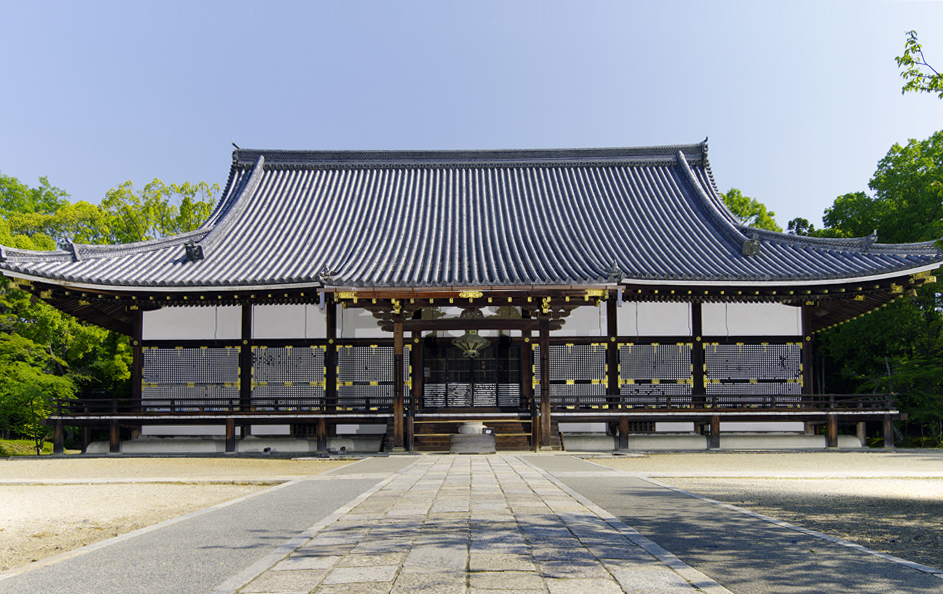Ninnaji Temple Introduction
Ninnaji Temple, one of Kyoto’s most renowned World Heritage Sites, stands as both a significant Buddhist sanctuary and a former imperial residence. Founded in 888, Ninnaji has served as the head temple of the Omuro School of the Shingon sect for centuries. With its unique history of imperial family members serving as head priests, it’s also known as “Omuro Imperial Palace.” Let’s delve into this millennia-old temple that beautifully merges imperial grandeur with Buddhist tranquility.
Key Points About Ninnaji
- Established in 888 CE, symbolizing the close relationship between Japan’s imperial family and Buddhism
- The oldest existing buildings date back to the early 1600s (Edo Period)
- Famous for its exquisite Goten (former imperial residence) and Japanese gardens
- Home to the unique late-blooming cherry variety called “Omuro Cherries”
- A UNESCO World Heritage Site and must-visit destination in Kyoto
Rich History
Although Ninnaji was founded in the 9th century, none of the original structures remain due to wars and fires that plagued Kyoto over the centuries. Most of the buildings we see today date back to the early 17th century, including the Main Hall (Kondo), Kannon Hall, Niomon Gate, Chumon Gate, and the five-storied pagoda. These structures not only witness the evolution of Japanese Buddhism but also showcase the development of Japanese architectural artistry.
Main Attractions
The Goten (Former Imperial Residence)
The Goten is Ninnaji’s crown jewel, located in the southwestern corner of the temple complex. This former residence of the head priest is built in the style of an imperial palace. Elegant buildings connected by covered corridors feature beautifully painted sliding doors (fusuma) and are surrounded by stunning rock and pond gardens. A stroll through the Goten transports visitors through time, offering a unique experience of imperial and Buddhist fusion.
Five-Storied Pagoda
Ninnaji’s five-storied pagoda is an iconic landmark in northern Kyoto. This masterpiece of Buddhist architecture also serves as an excellent vantage point for admiring the surrounding natural landscape. In spring, the cherry blossoms blooming around the pagoda create an unforgettable scene.
Omuro Cherries
Ninnaji is famous for its grove of late-blooming cherry trees known as “Omuro Cherries.” These typically bloom in mid-April, about two weeks later than other cherry varieties in Kyoto. This makes Ninnaji an ideal spot for cherry blossom viewing towards the end of the season, extending the hanami (cherry blossom viewing) period for visitors.
Best Time to Visit
- Spring (late March to mid-April): For Omuro Cherry blossoms
- Autumn (October to November): For stunning fall foliage
- Year-round: To experience traditional Japanese temple culture
Getting There
From Kyoto Station:
- Take a direct JR bus to Ninnaji Temple (about 30 minutes, 230 yen)
- Buses run every 15-30 minutes
- Covered by Japan Rail Pass, JR Kansai Area Pass, and others
From Arashiyama:
- Take the Keifuku Kitano Line to “Omuro Ninnaji Station” and walk a short distance
Hours and Admission
- Open: 9:00 AM to 5:00 PM (closes 30 minutes earlier from December to February)
- Open year-round
- Admission:
- Goten area: 800 yen
- Additional 500 yen for grounds during cherry blossom season
Visitor Tips
- Book in advance for temple meditation experiences
- Arrive early during cherry blossom season to avoid crowds
- Wear comfortable walking shoes as the complex is quite large
- Bring cash for tickets and souvenirs
- Observe temple etiquette: maintain quietness and don’t touch artifacts
Official Website
Ninnaji Temple Official Website
Conclusion
Ninnaji Temple is not just an ancient Buddhist site; it’s a testament to the harmonious blend of Japan’s imperial heritage and Buddhist culture. From the exquisite Goten buildings and serene Japanese gardens to the unique Omuro Cherries, every aspect of Ninnaji showcases the essence of Japanese culture. A visit to Ninnaji immerses you in a cultural journey spanning a millennium, where you can feel the imperial majesty and Buddhist serenity intertwined. Don’t miss this cultural gem in Kyoto – make Ninnaji Temple a highlight of your Japanese adventure!
